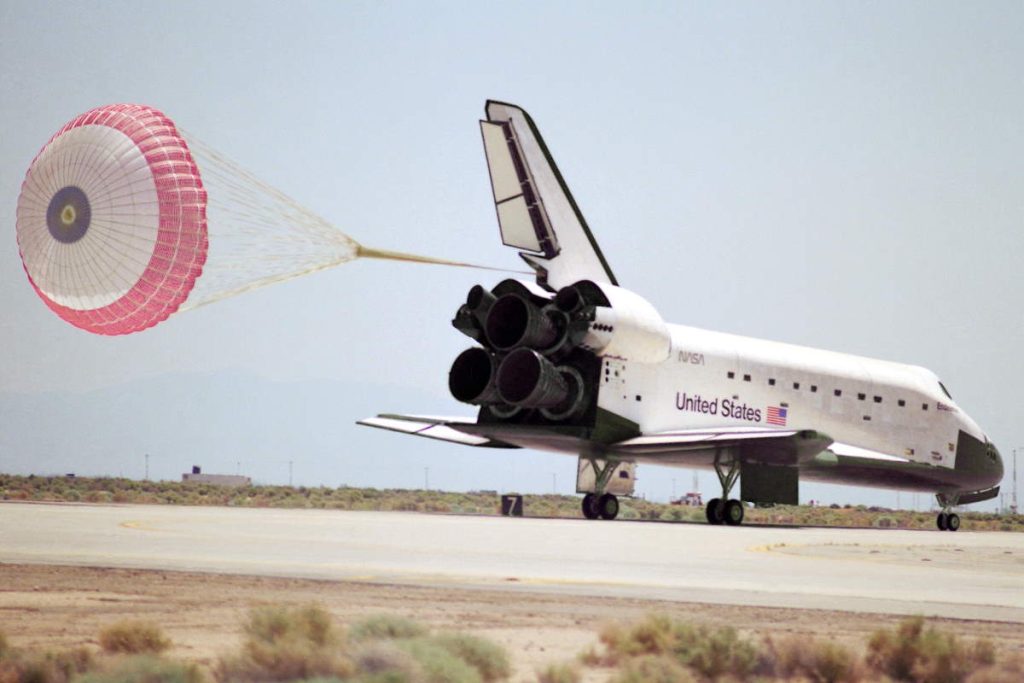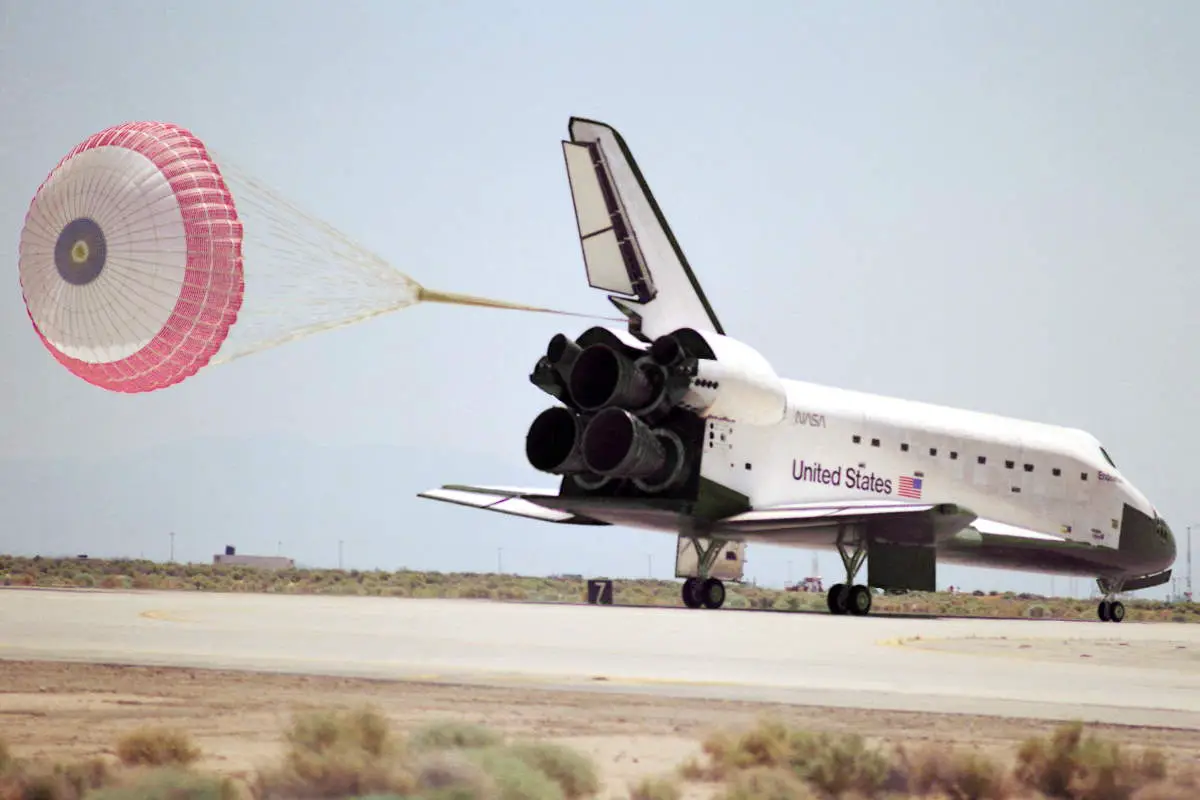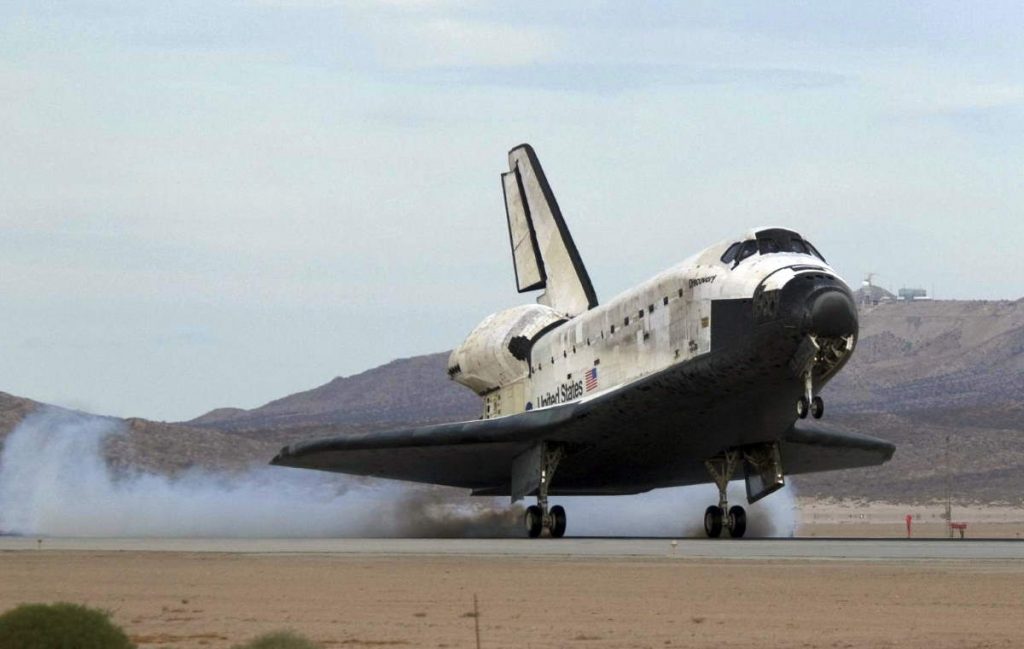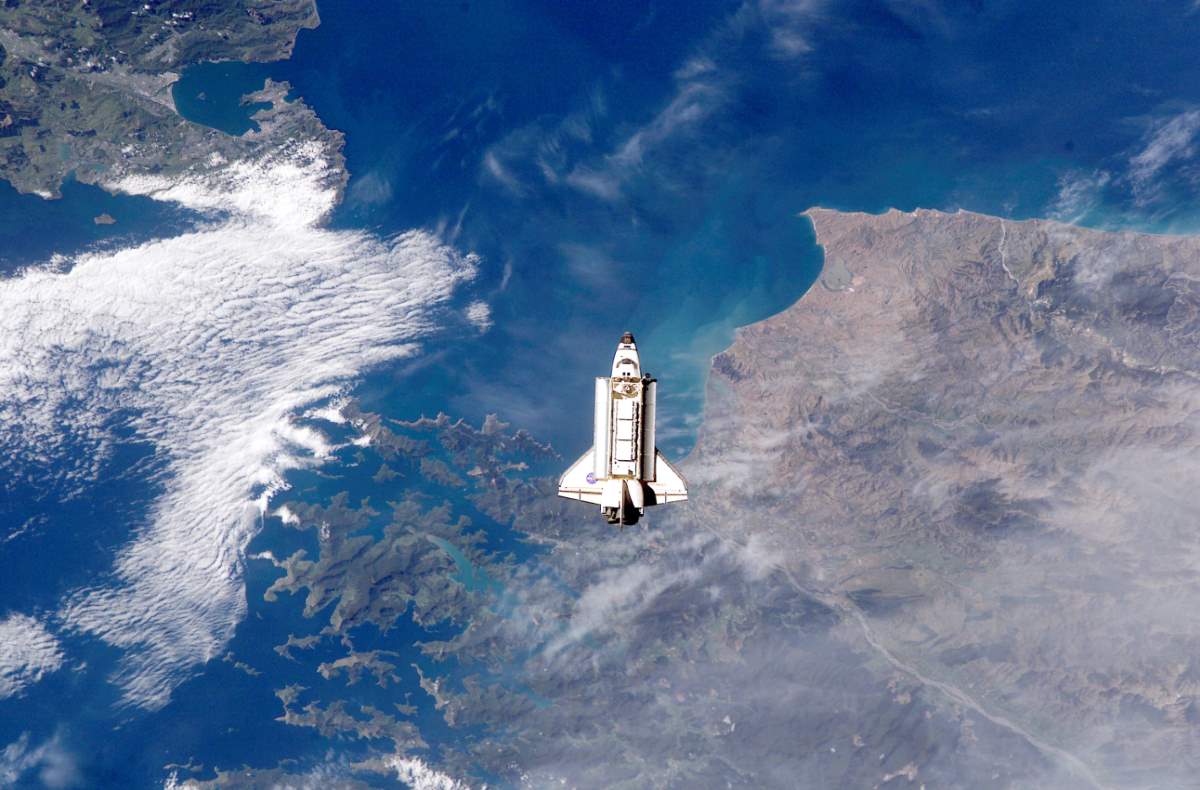On May 16, 1992, Space Shuttle Endeavour completed its maiden voyage and landed safely on runway 22 at Edwards Air Force Base in the California desert. It was the first use of a drag chute for a Space Shuttle landing.
Today’s (May 16) story of what happened this day in Science, Technology, Astronomy, and Space Exploration history.
Space Shuttle Endeavour
Endeavour was the fifth and final operational Space Shuttle built. Its Orbiter Vehicle Designation was OV-105. It embarked on its first mission, STS-49, in May 1992 and its 25th and final mission, STS-134, in May 2011. It completed 25 missions while carrying a total of 173 crew members aboard.
It is named after the HMS Endeavour, a British Royal Navy research vessel that took the British explorer Captain James Cook (7 November 1728 – 14 February 1779) on his first voyage of discovery between 1768 and 1771. That’s why its name is spelled in the British English manner, “Endeavour”, rather than the American English (“Endeavor”).
Space Shuttle Endeavour performs the first drag chute landing
Endeavour’s maiden voyage started with a successful launch on May 7, 1992. It was the 49th space shuttle mission (STS-49). The crew members were:
- Daniel C. Brandenstein (Commander, fourth and last spaceflight)
- Kevin P. Chilton (Pilot, first spaceflight)
- Richard J. Hieb (Mission Specialist 1, second spaceflight)
- Bruce E. Melnick (Mission Specialist 2, second and last spaceflight)
- Pierre J. Thuot (Mission Specialist 3, second spaceflight)
- Kathryn C. Thornton (Mission Specialist 4, second spaceflight)
- Thomas D. Akers (Mission Specialist 5, second spaceflight)
The primary goal of the STS-49 mission was to retrieve an Intelsat VI satellite, Intelsat 603, which failed to leave Low Earth orbit two years before, attach it to a new upper stage, and relaunch it to its intended geosynchronous orbit.

The INTELSAT VI (F-3) satellite was stranded in an unusable orbit since its launch aboard a Titan vehicle on March 14, 1990, due to a launch failure.
The satellite was successfully captured by crewmembers during an EVA (extravehicular activity) and equipped with a new perigee kick motor. Then it was subsequently released into orbit and the new motor fired to put the spacecraft into a geosynchronous orbit for operational use.
The capture required three EVAs:
- A planned one by astronauts Pierre J. Thuot and Richard J. Hieb who were unable to attach a capture bar to the satellite from a position on the RMS
- A second unscheduled but identical attempt the following day
- and finally, an unscheduled but successful hand capture by Pierre J. Thuot and fellow crewmen Richard J. Hieb and Thomas D. Akers as Commander Daniel C. Brandenstein. Astronauts delicately maneuvered the orbiter to within a few feet of the 4.5-ton communications satellite. An ASEM structure was erected in the cargo bay by the crew to serve as a platform to aid in the hand capture and subsequent attachment of the capture bar. With a duration of 8 hours and 29 minutes, this spacewalk, EVA #100 (STS-49 – EVA 3) was the longest spacewalk in the history of space exploration when it was performed (now it is the second-long spacewalk ever performed).

A planned EVA also was performed by astronauts Kathryn C. Thornton and Thomas D. Akers as part of the Assembly of Station by EVA Methods (ASEM) experiment to demonstrate and verify maintenance and assembly capabilities for Space Station Freedom. The ASEM spacewalk, originally scheduled for two successive days, was cut to one day because of the lengthy INTELSAT retrieval operation.
Other “payloads of opportunity” experiments conducted included: Commercial Protein Crystal Growth (CPCG), Ultraviolet Plume Imager (UVPI), and the Air Force Maui Optical Station (AMOS) investigation. The mission was extended by two days to complete all of the objectives.
The following records were set during the STS-49 mission:
- First EVA involving three astronauts.
- First and second-longest EVA to date: 8 hours and 29 minutes and 7 hours and 45 minutes.
- First shuttle mission to feature four EVAs.
- EVA time for a single shuttle mission: 25 hours and 27 minutes, or 59:23 person-hours.
- First shuttle mission requiring three rendezvous with an orbiting spacecraft.
- First attachment of a live rocket motor to an orbiting satellite.
- The first use of a-drag chute during a shuttle landing.
Video: STS-49, Space Shuttle Endeavour’s maiden voyage, launch & landing
Endeavour’s final mission
Space Shuttle Endeavour flew its final mission, STS-134, to the International Space Station (ISS) in May 2011 (launched on May 16, 2011, and landed on June 1, 2011).
The crew members of STS-134 were:
- Mark Kelly (Commander, fourth and last spaceflight)
- Gregory H. Johnson (Pilot, second and last spaceflight)
- Michael Fincke (Mission Specialist 1, third spaceflight)
- Roberto Vittori, ESA (Mission Specialist 2, third spaceflight)
- Andrew J. Feustel (Mission Specialist 3, second spaceflight)
- Gregory Chamitoff (Mission Specialist 4, second and last spaceflight)
After the conclusion of STS-134, Space Shuttle Endeavour was formally decommissioned.
Sources
- Space Shuttle Endeavour on the NASA website
- Space Shuttle Endeavour on Wikipedia
- Space Shuttle Endeavour gallery on the NASA website
- “STS-49 Shuttle Endeavour Landing at Edwards with First Drag Chute Landing” on the NASA website
- “STS-49 Endeavour Touchdown at Edwards with First Drag Chute Landing” on the NASA website
- STS-49 on Wikipedia
- STS-49 on the NASA website
- Space Shuttle Endeavour’s Touchdown Meets Columbia’s Salute [An amazing photo from the past] - February 29, 2024
- Moon Landings: All-Time List [1966-2024] - February 23, 2024
- From Orbit to Ordinary: 10 Earthly Applications of Space Technology - January 23, 2024


